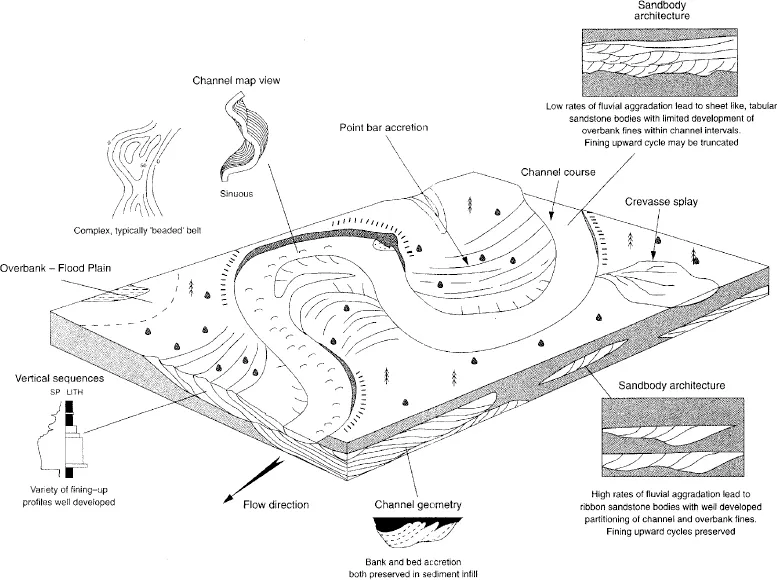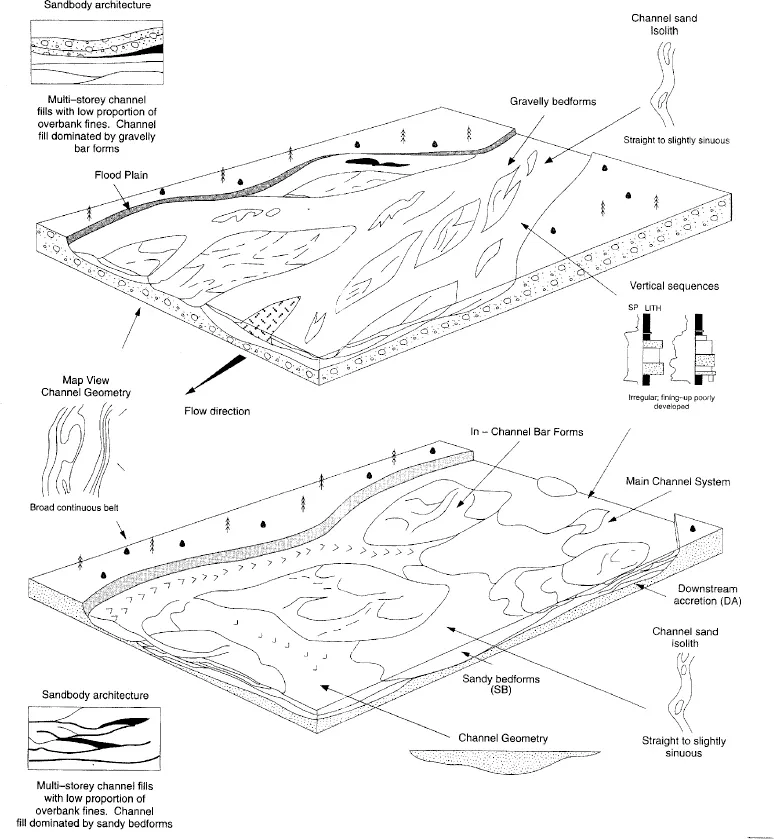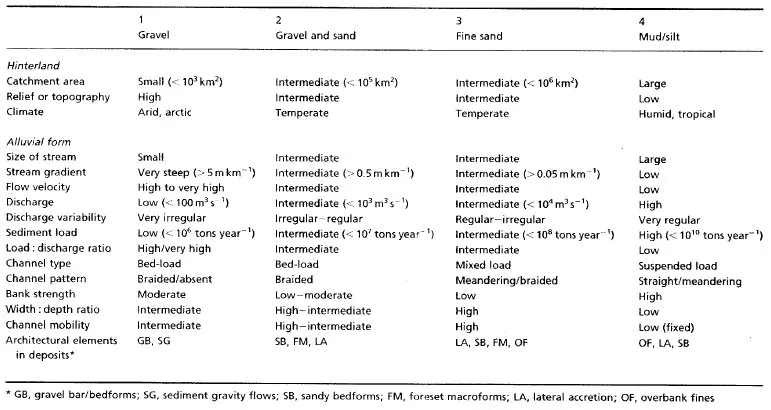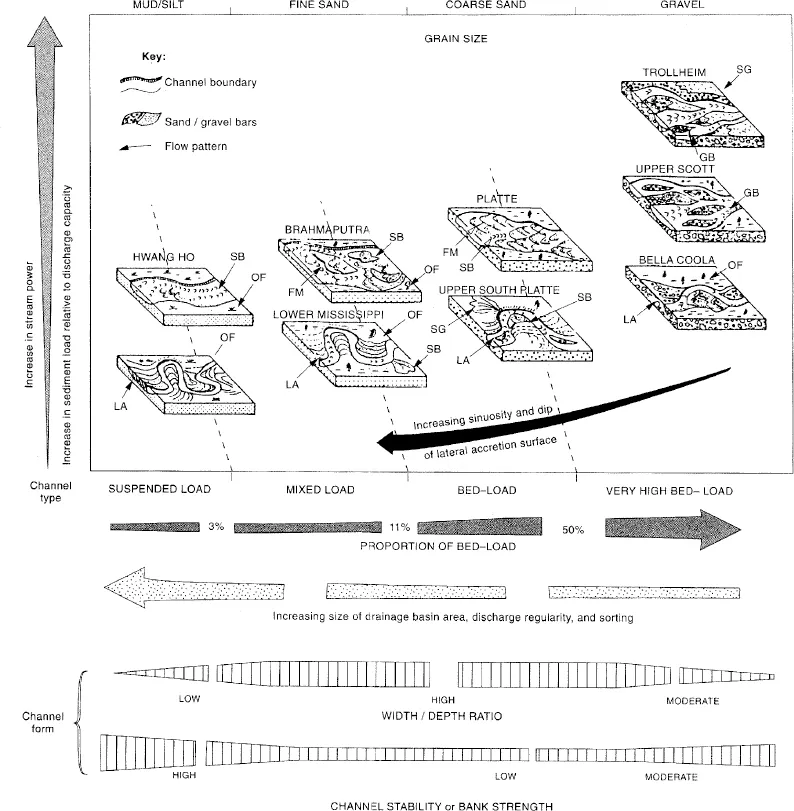
- English
- ePUB (mobile friendly)
- Available on iOS & Android
eBook - ePub
Sequence Stratigraphy
About this book
The innovation and refinement of the techniques and concepts of sequence stratigraphy has been one of the most exciting and profound developments in geology over the past thirty years. Seismic stratigraphy has now become one of the standard tools of the geoscientist, and there is a pressing need for an introductory text on sequence stratigraphy. This new book sets out to define and explain the concepts, principles and applications of this remarkably influential approach to the study of sedimentary strata. The authors take a rigorous objective stance in evaluating the techniques and interpretation of sequence stratigraphy - basing the text on an internal training course developed by British Petroleum (BP).
- A new text on this increasingly important field
- A practical guide based on the experience of practising sequence stratigraphers
- Based on a highly successful BP training course
Frequently asked questions
Yes, you can cancel anytime from the Subscription tab in your account settings on the Perlego website. Your subscription will stay active until the end of your current billing period. Learn how to cancel your subscription.
No, books cannot be downloaded as external files, such as PDFs, for use outside of Perlego. However, you can download books within the Perlego app for offline reading on mobile or tablet. Learn more here.
Perlego offers two plans: Essential and Complete
- Essential is ideal for learners and professionals who enjoy exploring a wide range of subjects. Access the Essential Library with 800,000+ trusted titles and best-sellers across business, personal growth, and the humanities. Includes unlimited reading time and Standard Read Aloud voice.
- Complete: Perfect for advanced learners and researchers needing full, unrestricted access. Unlock 1.4M+ books across hundreds of subjects, including academic and specialized titles. The Complete Plan also includes advanced features like Premium Read Aloud and Research Assistant.
We are an online textbook subscription service, where you can get access to an entire online library for less than the price of a single book per month. With over 1 million books across 1000+ topics, we’ve got you covered! Learn more here.
Look out for the read-aloud symbol on your next book to see if you can listen to it. The read-aloud tool reads text aloud for you, highlighting the text as it is being read. You can pause it, speed it up and slow it down. Learn more here.
Yes! You can use the Perlego app on both iOS or Android devices to read anytime, anywhere — even offline. Perfect for commutes or when you’re on the go.
Please note we cannot support devices running on iOS 13 and Android 7 or earlier. Learn more about using the app.
Please note we cannot support devices running on iOS 13 and Android 7 or earlier. Learn more about using the app.
Yes, you can access Sequence Stratigraphy by Dominic Emery, Keith Myers, Dominic Emery,Keith Myers in PDF and/or ePUB format, as well as other popular books in Physical Sciences & Geology & Earth Sciences. We have over one million books available in our catalogue for you to explore.
Information
CHAPTER SEVEN
Fluvial Systems
7.1 Introduction
7.2 Fluvial processes and channel styles
7.2_1 Straight and anastomosing rivers
7.2_2 High-sinuosity channel systems
7.2_3 Low-sinuosity channel systems
7.2_4 Classification of fluvial systems
7.3 The concept of the graded stream profile
7.4 Fluvial architecture
7.4_1 Controls on fluvial architecture
7.4_2 Sequence boundaries and lowstand systems tracts in alluvial strata
7.4_3 Transgressive systems tracts and flooding surfaces in alluvial strata
7.4_4 Highstand systems tracts in alluvial strata
7.5 Reconstructing fluvial architecture
7.5_1 Eocene Castissent Formation, South Pyrenees, Spain
7.5_2 Triassic, Ivishak Formation, Prudhoe Bay Field, North Slope, Alaska, USA
7.1 Introduction
The value of sequence stratigraphy as a predictive tool in the analysis of clastic shoreline and shallow marine systems is well documented in the literature and is reviewed in Chapter 8. Recent attempts to apply sequence stratigraphic concepts to fluvial systems has met with less success because the role of relative sea-level fluctuations in fashioning the fluvial stratigraphic record is less clear (Posamentier and Vail, 1988; Posamentier, 1993; Shanley, 1991; Shanley and McCabe, 1989, 1990, 1991, 1994; Westcott, 1993). Fluvial systems respond to a bewildering set of external (allocyclic) and internal (autocyclic) controls (Schumm, 1968, 1981; Schumm and Ethridge, 1991). The problem is compounded by rapid lateral facies changes and a lack of internal features in thick alluvial successions which allow them to be sub-divided into time stratigraphic units. As a result, the application of sequence stratigraphy to fluvial systems is still in its infancy, with concepts and models still the subject of lively debate (Galloway, 1981; Miall, 1986, 1991; Boyd et al., 1989; Walker, 1990; Posamentier and James, 1993; Schumm, 1993; Westcott, 1993; Koss et al., 1994; Shanley and McCabe, 1994).
The early sections of this chapter focus on depositional processes and fluvial channel patterns. The concept of the graded river profile is then introduced as the primary control on the development of accommodation in fluvial systems. Finally, the potential role of relative sea-level change in influencing the fluvial record is reviewed and illustrated with a number of examples.
7.2 Fluvial processes and channel styles
Fluvial systems are one of the best studied of all depositional environments. A detailed review of fluvial depositional environments is beyond the scope of this chapter and the reader is referred to a number of excellent summaries on this subject (Cant, 1978b; Miall, 1978, 1992; Ethridge and Flores, 1981; Collinson and Lewin, 1983; Collinson, 1986; Ethridge et al., 1987).
Four traditional styles of fluvial channel are commonly recognized; braided, meandering, anastomosing and straight (Leopold and Wolman, 1957; Leopold et al., 1964; Rust, 1978). These categories are useful but must be considered only as tendencies within a spectrum of channel types or classes (see discussion in Miall, 1992). River channel patterns are controlled by discharge, sediment supply and gradient (Bridge, 1985). As a result, changes between channel classes are gradational, with one or a number of different channel patterns containing similar morphological elements.
7.2.1 Straight and anastomosing rivers
Straight and anastomosing river systems are relatively rare in the recent and geological record. Straight rivers have well-defined single channel courses with stable banks flanked by levees. Anastomosing rivers form interconnected networks of low gradient, relatively deep and narrow channels of variable sinuosity, characterized by stable, vegetated banks composed of fine-grained silt or clay (Smith and Smith, 1980; Putman, 1983; Rust and Legun, 1983; Nanson et al., 1986; Fig. 7.1a). Lateral channel migration is limited by the development of fine grained bank material and vegetation. Changes in channel course occur through avulsion (Smith, 1983); a process where successive major flooding events of the river result in progressive breaching and crevassing of the channel banks and alluvial ridge, leading to the formation of a new channel course along the lowest segment of the flood plain. Width to depth ratios of modern anastomosing channels are noticeably lower than for meandering systems (Smith and Smith, 1980; Smith and Putman, 1980; Smith, 1983; Tornqvist, 1993). The overbank and flood-plain areas separating channel courses consist of narrow natural levees, numerous crevasses, vegetated islands and wetlands (Smith and Smith, 1980).
Fig. 7.1 (a) Block diagram of an anastomosing fluvial system illustrating the facies associations, channel belt and flood-plain subenvironments. Channel belts confined by fine-grained, vegetated overbank and flood-plain systems. Preserved channel belt systems form an interconnected network of low width-to-depth ratio sand bodies encased in overbank fines. Channel type common in low-gradient drainage systems and where increasing accommodation space leads to vertical rather than lateral accretion of alluvial deposits (after Galloway, 1981; Miall, 1992). OF, overbank fines; SB, sandy bedforms; CH, channels

Anastomosing channels have been documented in humid, tropical, semi-arid and arid climate settings, and appear to be typical of low-gradient downstream drainage systems dominated by cohesive sediments such as coastal plains and delta tops (Smith and Smith, 1980; Rust, 1981; Rust and Legun, 1983; Smith, 1983; Cairncross et al., 1988). This channel style may be developed preferentially in times of rapidly rising base level, where increasing accommodation space leads to a fluvial succession dominated by vertical rather than lateral accretion deposits (Smith and Smith, 1980; Smith, 1986; Kirschbaum and McCabe, 1992; Tornqvist, 1993). The depositional record of these systems is therefore dominated by isolated, shoestring-like sand bodies separated by levee–overbank, crevasse splay and flood-plain fines (Fig. 7.1a; Friend et al., 1978; Friend, 1983).
7.2.2 High-sinuosity channel systems
High-sinuosity channels develop in drainage areas dominated by low-gradient slopes, and where the river is commonly dominated by a high suspended load to bedload ratio (Leopold and Wolman, 1957; Allen, 1965; Schumm, 1971, 1977, 1981). They are typically organized into channel and overbank segments (Fig. 7.1b). Channels lie within a broad meander belt dominated by a complex distribution of active and abandoned channels. Active deposition is confined largely to the channel belt, resulting in a well developed, raised alluvial ridge which stands above the general level of the flood plain. The distal margins of the alluvial ridge form overbank areas that interfinger with the adjacent flood plain. The course of the channel may be constrained by abandoned channel plugs or be relatively free to migrate laterally, developing point bars and associated lateral accretion deposits.
Fig. 7.1 (b) Block diagram of a high-sinuosity fluvial system illustrating the facies associations, channel belts and flood-plain subenvironments. The channel belt is confined within a raised alluvial ridge. The character of the channel-fill may be highly variable. Channels may migrate laterally to develop tabular to sheet-like sand bodies separated by fine-grained overbank and flood-plain sediments, or deposition may be confined by channel plugs, resulting in ribbon sand bodies. In these cases the width-to-depth ratios may therefore be variable. The stacking patterns of channel sand bodies will be affected significantly by rates of flood-plain subsidence (accommodation space). (Modified after Galloway 1981; Miall, 1992)

The sediment load of modern high-sinuosity channels is highly variable, ranging from systems dominated by a finegrained suspended load (Jackson, 1976, 1978; Stewart, 1983) to coarse sand, gravel, pebble (Bernard and Major, 1963; McGowen and Garner, 1970; Levey, 1975; Arche, 1983) and gravel/pebble-rich systems (Gustavson, 1978; Ori, 1982; Forbes, 1983; Campbell and Hendry, 1987). A wide variety of facies and vertical facies successions may develop in the ancient record and facies successions may grade into the deposits of low-sinuosity systems (Puigdefabregas, 1973; Miall, 1983, 1987; Stewart, 1983).
Channel facies form tabular to sheet-like sand bodies separated by fine-grained overbank and flood-plain deposits (Fig. 7.1b; Friend, 1983). Areally restricted ribbon sand bodies may be more prevalent where channel belt migration is impeded (Puigdefabregas and Van Vliet, 1978). Associated overbank deposits comprise wedged shaped accumulations that thin and fine uniformly from the channel belt into the adjacent lacustrine or flood plain (Tornqvist, 1993).
7.2.3 Low-sinuosity channel systems
Low sinuosity or ‘braided’ channel systems occur where the coarser grain sizes, such as gravels and/or sands, form the dominant load of the system. In these cases, the lack of significant cohesive bank material leads to extremely mobile channel courses (Fig. 7.1c). Individual channels continually shift and bifurcate producing a rapidly evolving network of variable-scale braid channels with submerged in-channel migrating bedforms (Leopold and Wolman, 1957; Coleman, 1969; Collinson, 1970; Smith, 1974; Cant and Walker, 1976, 1978; Miall, 1977; Cant, 1978a,b).
Fig. 7.1 (c) Block diagram of a low sinuosity (upper) gravelly and (lower) sandy fluvial system illustrating the facies associations, channel belts and flood-plain subenvironments. The lack of well-developed fine-grained overbank sediments within these systems leads to mobile channel courses and well-developed sheet sandstones (SB) and gravel bodies (GB) (modified after Galloway, 1981; Miall, 1992)

The high bedload content of the low-sinuosity rivers, combined with the highly mobile nature of channel systems leads to a stratigraphic record dominated by lenticular, concave-upward sand bodies characterized by variable scale cross-stratification, lateral accretion deposits and a lack of channel-margin facies (Moody-Stuart, 1966, Campbell, 1976; Hazeldine, 1983; Bristow, 1987).
7.2.4 Classification of fluvial systems
The basic channel styles described above are often difficult to recognize in the geological record. The grain size of the fluvial system has been suggested as a parameter to subdivide fluvial systems because it can be measured in both the ancient and modern, at outcrop and in the subsurface. On this basis, river systems can be broadly subdivided into four principal types comprising; high-bedload, bedload, mixed-load and suspended-load dominated rivers (Schumm, 1977; Schumm and Brakenridge, 1987; Orton and Reading, 1993). Each of the four system-types displays characteristic channel-fill geometries, facies assemblages and vertical successions (Fig. 7.2 and Table 7.1).
7.3 The concept of the graded stream profile
In all depositional systems, deposition, burial and erosion are controlled by an equilibrium surface or base level which defines and influences the amount of accommodation space (see Chapter 2). The equilibrium surface separating erosion from deposition in fluvial systems may reflect the influence of numerous base levels (Miall, 1987, 1992; Posamentier, 1988; Westcott, 1993). These include lake-level, the level of trunk-stream drainage, the position of nick points, the position of ground-water tables and relative sea-level. This is in contrast to shoreline and shallow marine systems, where base level generally equates to sea-level. For this reason, the concept of a graded stream profile has been applied to fluvial systems to define an equilibrium surface that separates erosion from deposition and controls available sediment accommodation (Mackin, 1948; Sloss, 1962).
Mackin (1948) defined a graded stream or river as:
One in which, over a period of years, the slope is delicately adjusted to provide, with available discharge and with prevailing channel characteristics, just the velocity required for the transport of load supplied to the basin. The graded river is a system in equilibrium: its diagnostic characteristic is that any change in one of the controlling factors will be transmitted throughout the whole profile.
A graded profile can be considered as representing a balance between erosion and deposition; it will be graded such that the stream can transport its load along the profile without significant erosion or deposition. The slope at any point on the graded river profile will be a function of river discharge and sediment load (volume and capacity). Downstream reductions in slope relate to increasing discharge and down-valley decreases in grain size (Fig. 7.2). The overall shape of the slope will be modified through time to approximate a concave upward graded profile, flat at the river mouth and steepening towards the source.
Table 7.1 Summary characteristics of fluvial depositional systems according to grain size (from Orton and Reading, 1993). Facies codes after Miall (1978, 1985).

Fig. 7.2 Relationship between grain size and channel pattern (after Orton and Reading, 1993). Note general tendency of increasing sinuosity, confinement of channel belts and discharge regularity with decreasing grain size and low-gradient slopes. Position of fluvial examples approximate (based on Schumm, 1981; Ferguson, 1987; Miall, 1985) (Fluvial facies and architectural elements, after Miall, 1985). Architectural elements: GB, gravel bar/bedforms; SB, sandy bedforms; FM, foreset macroforms; LA, lateral accretion; SG, sediment gravity flows; and OF, overbank fines

Through time, rivers will attempt to establish a stable graded profile for a given discharge of water and sediment. Disturbances in this system, such as sea-level fluctuations, climatic change and tectonics, cause the stream to reestablish a new state of equilibrium by changing the external and internal attributes of the river (Schumm and Ethridge, 1991; Germanoski and Schumm, 1993; Schumm, 1993). This can be achieved by altering a river’s characteristics such as (Table 7.2):
channel width
sediment calibre
velocity
boundary roughness
depth
sediment discharge
slope
planform.
Although autocyclic mechanisms may modify the short-term character of the fluvial system, only long-te...
Table of contents
- Cover
- Contents
- Title Page
- Copyright
- List of Contributors
- Preface
- Acknowledgements
- Historical Perspective
- Concepts and Principles
- Sequence Stratigraphie Tools
- Applications to Depositional Systems
- References
- Index